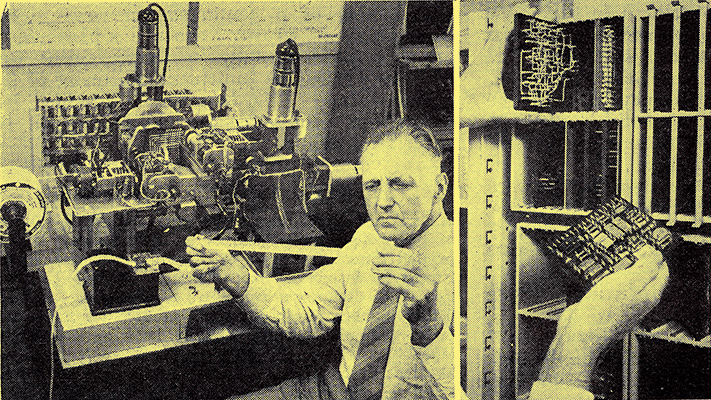|

The designer. R F Mallina, examining the 'programming' tape. Typical sub-assemblies are shown on the right.
In circumstances which dictate the use of conventional circuit wiring rather than 'printed' circuitry, it would be convenient to carry out the Wiring automatically when the quantities required are sufficiently large.
An experimental machine (Type M4) developed by Bell Telephone Laboratories employs the solderless wrapped jointing principle evolved by R F Mallina. The wire is wrapped mechanically round a rectangular terminal pin and bites into the corners to give a stable low-resistance contact.
The wrapping tool has a power-driven spindle and is moved into a number of predetermined positions along guides, rather like the slide rest of a lathe. At the beginning of each operation the tool picks up the end of the wire from the supply reel (seen at the left of the photograph) and bares the insulation. The start and finish of each wire is determined by the information contained in a punched paper strip which is 'read' by electrical contacts in association with a number of relays.
In the left-hand picture it will be seen that the machine has two heads; it is 'ambidextrous' and can wire both sides of a panel without removing it from the machine.
|